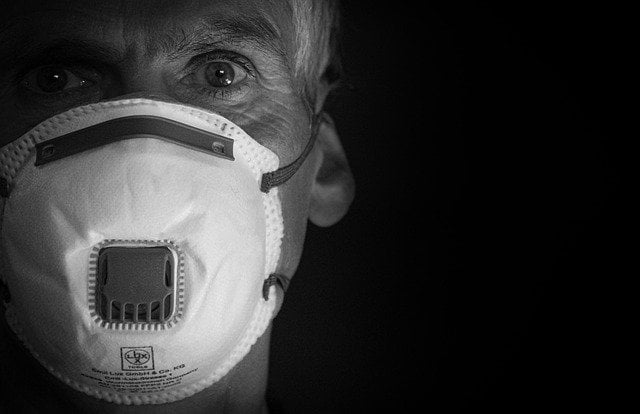This New Face Mask Prototype Can Detect COVID-19 Infection

New York: Engineers at MIT and Harvard University have designed a novel face mask that can diagnose the wearer with COVID-19 within about 90 minutes. The masks are embedded with tiny, disposable sensors that can be fitted into other face masks and could also be adapted to detect other viruses, MIT News reported.
The SARS-CoV-2 biosensor is based on the wearable freeze-dried cell-free (wFDCF) technology, which involves extracting and freeze-drying the molecular machinery that cells use to read DNA and produce RNA and proteins.
The face mask sensors are designed so that they can be activated by the wearer when they’re ready to perform the test, and the results are only displayed on the inside of the mask, for user privacy.
In a new study, the researchers showed that the sensors could be incorporated into not only face masks but also clothing such as lab coats, potentially offering a new way to monitor health care workers’ exposure to a variety of pathogens or other threats.
“We’ve demonstrated that we can freeze-dry a broad range of synthetic biology sensors to detect viral or bacterial nucleic acids, as well as toxic chemicals, including nerve toxins. We envision that this platform could enable next-generation wearable biosensors for first responders, health care personnel, and military personnel,” James Collins, the Termeer Professor of Medical Engineering and Science in MIT’s Institute for Medical Engineering and Science (IMES) and Department of Biological Engineering and the senior author of the study was quoted as saying.
The paper has appeared in Nature Biotechnology.
Wearable sensors
The new wearable sensors and diagnostic face mask are based on technology that Collins began developing several years ago. In 2014, he showed that proteins and nucleic acids needed to create synthetic gene networks that react to specific target molecules could be embedded into paper, and he used this approach to create paper diagnostics for the Ebola and Zika viruses. In work with Feng Zhang’s lab in 2017, Collins developed another cell-free sensor system, known as SHERLOCK, which is based on CRISPR enzymes and allows highly sensitive detection of nucleic acids.
These cell-free circuit components are freeze-dried and remain stable for many months, until they are rehydrated. When activated by water, they can interact with their target molecule, which can be any RNA or DNA sequence, as well as other types of molecules, and produce a signal such as a change in color.
More recently, Collins and his colleagues began working on incorporating these sensors into textiles, with the goal of creating a lab coat for health care workers or others with potential exposure to pathogens.
First, Soenksen performed a screen of hundreds of different types of fabric, from cotton and polyester to wool and silk, to find out which might be compatible with this kind of sensor. “We ended up identifying a couple that are very widely used in the fashion industry for making garments,” he says. “The one that was the best was a combination of polyester and other synthetic fibers.”
To make wearable sensors, the researchers embedded their freeze-dried components into a small section of this synthetic fabric, where they are surrounded by a ring of silicone elastomer. This compartmentalization prevents the sample from evaporating or diffusing away from the sensor. To demonstrate the technology, the researchers created a jacket embedded with about 30 of these sensors.
They showed that a small splash of liquid containing viral particles, mimicking exposure to an infected patient, can hydrate the freeze-dried cell components and activate the sensor. The sensors can be designed to produce different types of signals, including a colour change that can be seen with the naked eye, or a fluorescent or luminescent signal, which can be read with a handheld spectrometer. The researchers also designed a wearable spectrometer that could be integrated into the fabric, where it can read the results and wirelessly transmit them to a mobile device, the report added.


Comments are closed.